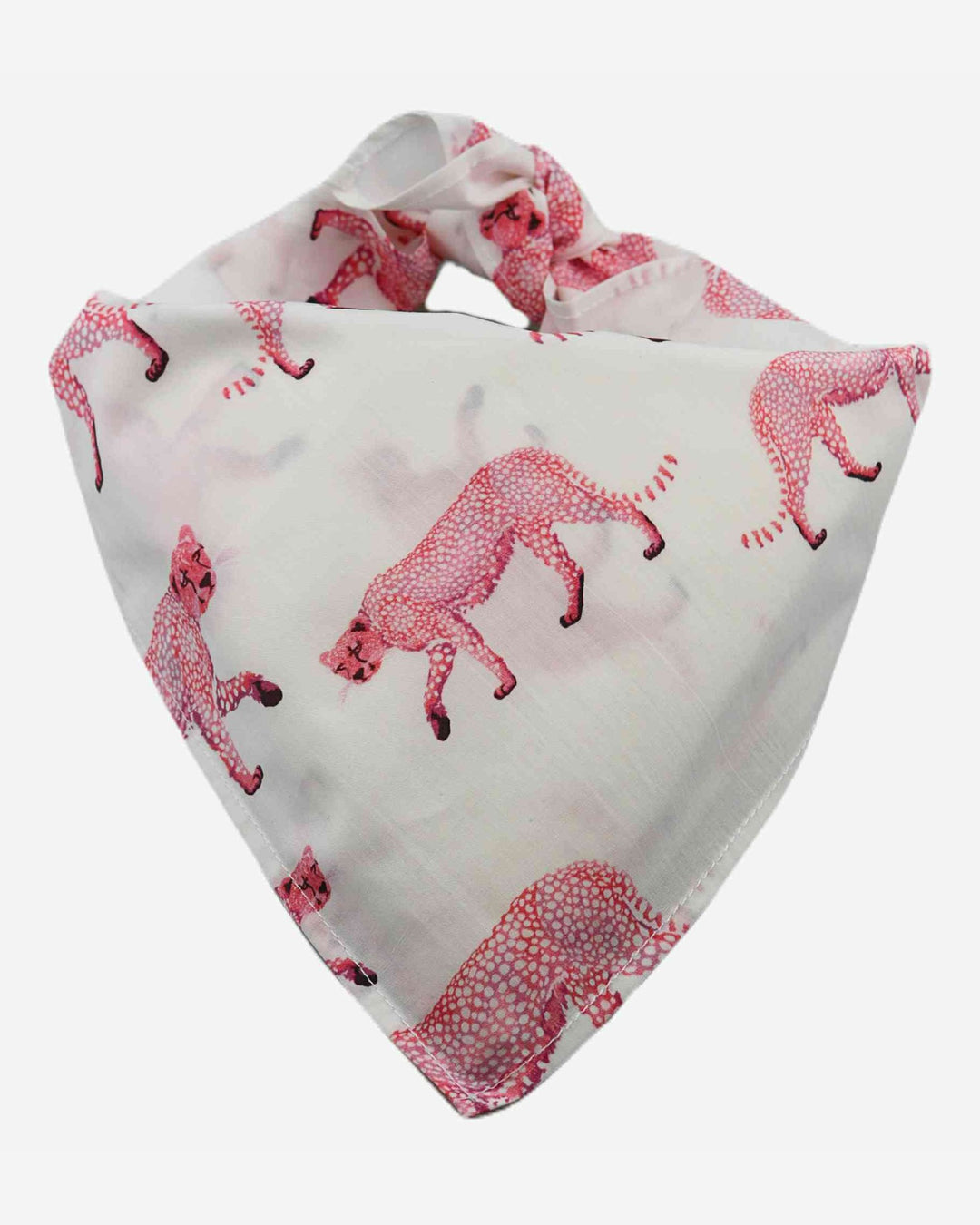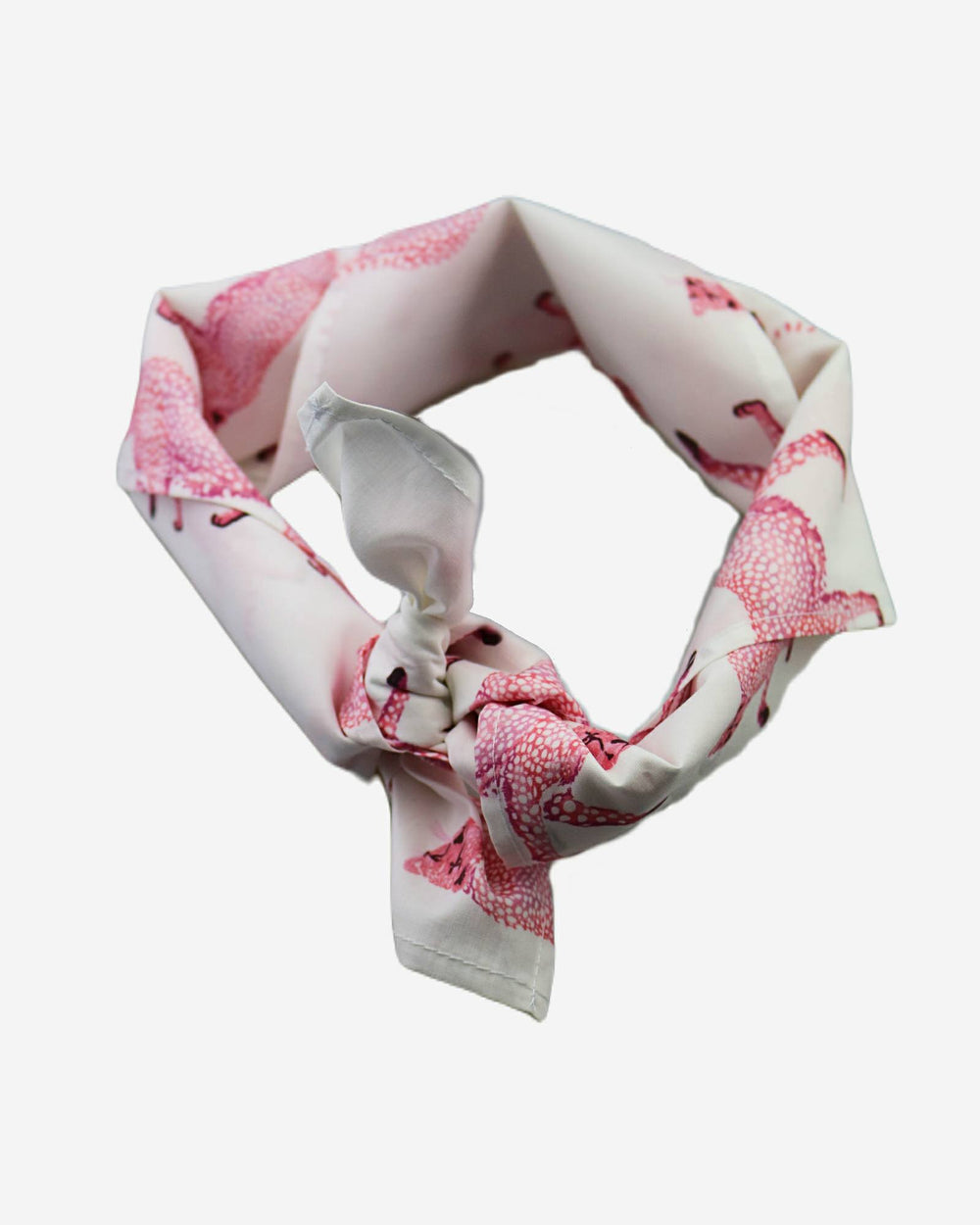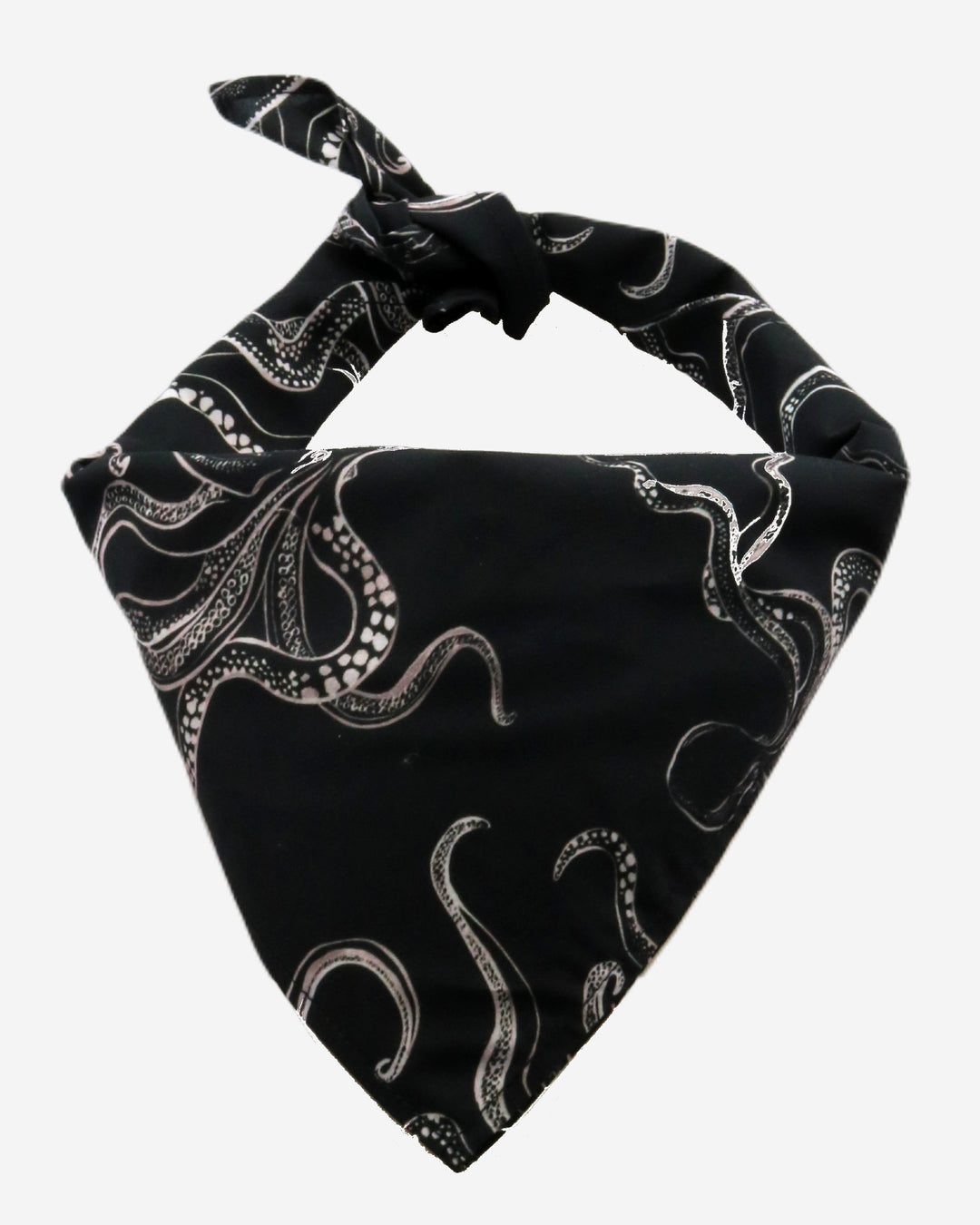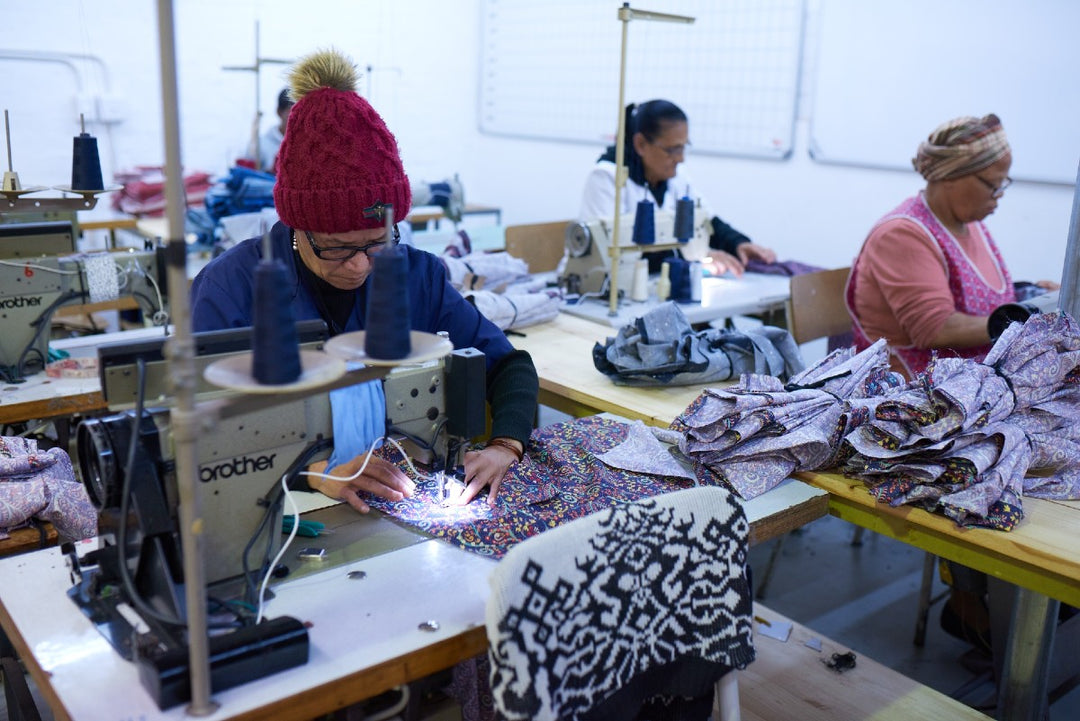The bandana holds deep cultural significance, evolving from a simple functional cloth into a powerful symbol of identity, style, and solidarity across various communities.
Historical Origins
The bandana traces its origins back to South Asia, where it was used as a functional cloth for wiping sweat and covering the face in hot, dusty environments. The word “bandana” itself comes from the Hindi term “bandhnu”, meaning “to tie”, referring to the traditional tie-dye techniques used in early designs.
By the 17th and 18th centuries, European traders introduced Indian-made bandanas to Western markets, where they became a symbol of status and style among the elite. During British colonial expansion, bandanas gained popularity in the Americas, particularly among sailors, workers, and cowboys, who used them for practical protection against dust and sweat.
By the mid-19th century, the bandana had become a staple accessory in the United States, used by pioneers, miners, and ranchers. Its evolution continued in the 20th century, where it became iconic in American culture, adopted by labor unions, political movements, and fashion trends across multiple subcultures.

Subcultural Associations
In the United States, the bandana has been embraced by multiple subcultures, including cowboys, bikers, and hip-hop artists. Cowboys wore bandanas for protection against dust and sun, while bikers used them as a statement of allegiance to their motorcycle clubs. In hip-hop culture, bandanas have been used to represent neighborhoods, movements, or affiliations.

Symbolic Meanings
The colors and patterns of bandanas have long carried symbolic meanings across different cultures and communities. In some contexts, red and blue bandanas are associated with street affiliations, while black and white bandanas have represented social justice movements and resistance.
Beyond these associations, many other colors hold distinct meanings, from green symbolizing environmental activism to pink representing inclusivity and self-expression. For a more detailed breakdown of bandana color meanings, explore our complete guide here.
Fashion and Self-Expression
Beyond subcultures, bandanas have become a widely used fashion accessory. Worn as a headband, neck scarf, or face covering, bandanas serve as a versatile statement piece in casual, streetwear, and high-fashion looks.
Enduring Symbolism
The cultural significance of the bandana lies in its adaptability and broad representation of identities, affiliations, and beliefs. Whether as a practical item or a bold fashion statement, the bandana remains a timeless icon. Explore our bandana collection to find the perfect style for you.
The Meaning of Bandana Colors
Blue Bandana Meaning
A blue bandana can have different meanings depending on context, culture, and location. Here are the most common interpretations:
Gang Affiliation (U.S.)
In some parts of the United States, a blue bandana is associated with the Crips, a well-known street gang. However, bandana colors can also signify different sets or groups within various communities.
Fashion & Style
Outside of gang culture, a blue bandana is simply a fashion statement. Many people wear bandanas in different colors without any affiliation, particularly in Western wear, streetwear, and rock culture.
Paisley Print & Bandana Culture
The classic paisley bandana in blue is commonly used in hip-hop, biker, and skate culture. Many brands and designers incorporate blue bandanas into shirts, shorts, and accessories as part of a casual aesthetic.
Symbol of Unity & Awareness
Some communities use blue bandanas to represent unity or support for causes. Occasionally, a light blue bandana may be used for awareness campaigns, such as prostate cancer awareness.
Workwear & Functionality
In blue-collar industries, workers sometimes wear blue bandanas for practical reasons, such as sweat absorption and dust protection. Farmers, construction workers, and bikers often wear bandanas in different colors for utility rather than symbolism.
Should You Be Concerned About Wearing One?
In most cases, no. If you’re simply wearing a blue bandana for fashion or practicality, there’s little risk of misunderstanding. However, in some urban areas in the U.S., certain colors (especially solid blue or red bandanas) might be misinterpreted depending on the local culture. If in doubt, a patterned or multi-colored bandana is a safe choice.
Red Bandana Meaning
A red bandana carries various meanings depending on context, culture, and location. Here are the most common interpretations:
Gang Affiliation (U.S.)
In certain parts of the United States, a red bandana is commonly associated with the Bloods, a well-known street gang. However, different groups and neighborhoods may use red bandanas to signify unique affiliations.
Fashion & Style
Outside of gang culture, red bandanas are a bold fashion statement, often seen in Western wear, rock culture, and streetwear. Many people wear red bandanas purely for their aesthetic appeal, with no symbolic meaning attached.
Cowboy & Western Culture
Red bandanas have a long history in cowboy culture, where they were traditionally worn as a practical accessory for protection against dust and the sun. Today, they remain a staple in Western fashion, often paired with denim and boots.
Symbol of Protest & Revolution
Throughout history, red bandanas have been worn as symbols of rebellion, labor movements, and political resistance. In protests and strikes, workers have used red bandanas to represent unity and the fight for workers’ rights.
Workwear & Functionality
Red bandanas have long been used in blue-collar industries, particularly among farmers, ranchers, and factory workers. The bright color helps make them easily visible, while the fabric serves a practical function for wiping sweat and protecting against dust.
Should You Be Concerned About Wearing One?
In most cases, wearing a red bandana is not a concern if it is for fashion or practical use. However, in certain urban areas in the U.S., red bandanas may be misinterpreted depending on local culture. If unsure, a patterned or multi-colored bandana is a safer choice.
Pink Bandana Meaning
A pink bandana is less commonly associated with a single movement or subculture but carries various meanings depending on the context. Here are the most common interpretations:
Fashion & Style
Pink bandanas are widely used as a fashion statement, symbolizing playfulness, individuality, and self-expression. They are popular in streetwear, casual fashion, and among those who enjoy bold accessories.
LGBTQ+ Pride & Inclusivity
Pink bandanas have been embraced in LGBTQ+ culture as a symbol of identity, inclusivity, and pride. They are often worn at Pride events and by individuals who support gender and sexual diversity.
Breast Cancer Awareness
Pink bandanas are commonly worn to support breast cancer awareness and research. The color pink has become internationally recognized as a symbol of solidarity with those affected by breast cancer, particularly during awareness campaigns and fundraising events.
Softness & Non-Conformity
In contrast to traditional red or blue bandanas, pink bandanas can symbolize a rejection of rigid gender norms and expectations. Some individuals wear them to express a softer, more non-conforming identity in opposition to traditional masculinity or toughness.
Should You Be Concerned About Wearing One?
Unlike red or blue bandanas, pink bandanas carry little to no risk of being misinterpreted in a negative way. They are widely accepted as a symbol of fashion, awareness, and inclusivity, making them a safe and stylish choice for any occasion.
Black Bandana Meaning
A black bandana carries different meanings depending on cultural and social contexts. Here are the most common interpretations:
Symbol of Rebellion & Anarchy
Black bandanas have been widely associated with anarchist movements, punk culture, and anti-establishment ideologies. They are often worn in protests and demonstrations as a sign of defiance and resistance.
Motorcycle & Biker Culture
In biker culture, black bandanas are commonly worn as a practical accessory for protection against dust, wind, and sun. They are also used as a symbol of belonging within motorcycle clubs.
Streetwear & Fashion
Black bandanas are a popular fashion statement, often seen in hip-hop, rock, and urban streetwear. The dark color gives off a sleek and edgy aesthetic that blends well with various styles.
Protest & Social Movements
Black bandanas have been used in various social justice movements, including anti-racism protests and labor strikes. They are sometimes worn to symbolize unity and resistance against oppression.
Should You Be Concerned About Wearing One?
Unlike red or blue bandanas, black bandanas are generally not linked to gang affiliation in most areas. However, depending on the setting, they can be interpreted as a symbol of rebellion or protest. If you're wearing one purely as a fashion accessory, there's little concern.
Green Bandana Meaning
A green bandana carries multiple meanings across different cultures, social movements, and fashion trends. Here are the most common interpretations:
Environmental Activism & Sustainability
Green bandanas are often used to symbolize support for environmental causes, sustainability, and ecological activism. Many environmental groups incorporate green bandanas into their movements.
Reproductive Rights & Feminist Movements
In Latin America and beyond, green bandanas have become a powerful symbol of reproductive rights and women's rights advocacy. They are frequently worn during protests advocating for safe and legal abortion access.
Streetwear & Fashion
Green bandanas are commonly worn as a fashion accessory, representing individuality and creativity. They are popular in casual and urban fashion, often paired with streetwear and outdoor styles.
Military & Tactical Symbolism
Green bandanas have been historically associated with military use, particularly in camouflage and tactical gear. They are sometimes worn by survivalists and outdoor enthusiasts for practical purposes.
Should You Be Concerned About Wearing One?
Green bandanas are generally not associated with negative connotations. However, in some regions, they are strongly linked to activist movements, particularly those advocating for reproductive rights. If worn outside of that context, they are simply seen as a stylish and practical accessory.














